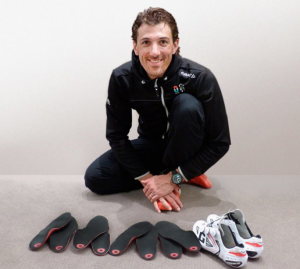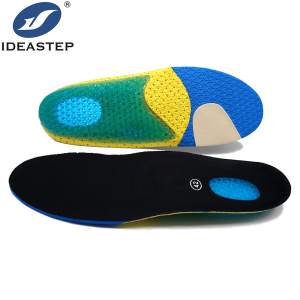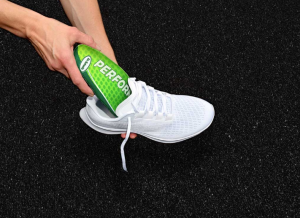What are the differences in the materials of various insoles?
Since a certain brand of celebrity signature basketball shoes was exposed as “soft like a ball”, it has driven the sales of various insoles. Friends who are worried about the inflammation of their sole fascia have replaced the “original parts” in their shoes with various expensive or general multifunctional insoles.
It is said that NBA players and athletes in other sports have their own customized insoles, and the price of insoles easily exceeds that of shoes by several times. Just like a rally car, under the same shape, there is a different interior from the ordinary civilian version. To borrow a sentence: “It just looks the same.”

In many shoes or videos, I often hear comments like this: This shoe has the feeling of stepping on shit…This shoe is too hard… Then I started to talk about the feeling of the midsole shock absorption effect of each family. In fact, my personal feeling, the so-called foot feel of a pair of shoes, the configured insoles play about 2/3, and the cushioning ability of the shoes, the insoles can also play about 1/3 of them. In many cases, changing a pair of insoles can change the feel of a pair of shoes. Many sneaker UP owners that I pay attention to on the small break station also attach great importance to insoles. Therefore, the insoles in our shoes are also very important. Now many hospitals have launched custom personal 3D printed insoles projects, and some of the expenses can be reimbursed by medical insurance. But even so, it takes a lot of time and money to go to the hospital to customize a pair of insoles.
Common insole materials:
Probably inseparable from EVA, silicone, ORTHOLITE, and PU. Hyperion insoles seem to be a kind of PU. I basically wear insoles of these several materials, let’s talk about my feelings.
EVA: EVA is also a commonly used material in shoe midsoles, and the density of EVA for insoles is even lower. The foot feels good at the beginning, but it tends to collapse after a long time. Basically, low-end sports shoes are in use.

Silica gel: I personally dislike the material the least. Although it has good elasticity, it is heavy and does not wick away sweat. It is also soft and not easy to lay flat. Now there are almost none of the major brand sports shoes that are originally equipped with silicone materials.
![]()

![]()
ORTHOLITE: Personally favorite materials are generally those with little black particles inside after foaming. It has lightweight, has good cushioning (feeling on shit), and is also more durable. The sweat-wicking ability is very strong. After a long time of exercise, the sweat will drain to the lower layer of the insole, and the upper surface is even dry. It seems that jogging shoes led by ASICS and Mizuno are almost made of this material, and the forefoot part of outdoor shoes is also used for many purposes.

PU: The PU mentioned here refers to polyurethane with a low foaming degree. Pu insoles feel harder, but they are actually quite elastic, just like the hard spring suspension in a car. Compared with high-foaming materials like ORTHOLITE, it is characterized by good stability. So many basketball shoes and outdoor shoes like to use, or as the bottom layer of composite insoles. The disadvantage is that it has almost no perspiration ability and is easily hydrolyzed in contact with water (this is the leather sole of Aibu, which will be powdered within a few years).
The influence of insoles on shoes:
1. If you think the shoes are too soft and the support is not enough, you can change to a pair of PU or cork insoles with arch support design, it will be even better;
2. If you are pursuing the sense of stepping on shit, then change to ORTHOLITE insoles.
3. For sweaty feet, ORTHOLITE and Hyperion insoles are very suitable.
4. In addition to a single material, many high-end insoles now use composite materials. The forefoot arch and the heel use different materials to provide different performances. Carbonfiber board is even added to enhance the support performance, which can improve the overall wearing experience of the shoes.
5. If you have serious foot or knee problems, you can go to the hospital or a professional insole manufacturer to go out for a “foot model” to make a fully customized insole.

Things to pay attention to when changing insoles:
1. The size of the shoes. The insoles to be replaced are usually thicker. After replacement, the shoes are usually smaller. Some insoles may even need to be replaced by a size larger shoe.
2. The front-to-back drop of the insole after replacement. When designing sports shoes, the height difference between the front and rear palms is a very important size. When we change the insoles for sports shoes, it is best to replace the insoles with the same thickness as the original insoles and try to maintain the original height of the front and rear palm drop.
3. The complementarity of insoles and shoes. For a pair of shoes with good cushioning but weak support, we will change to a pair of well-supported hard insoles; for well-supported shoes with weak cushioning, we will change to a soft insole with good cushioning. Or change according to your own preference, remember not to ignore your actual situation, blindly follow the advertisement or evaluation text to replace the insole.
